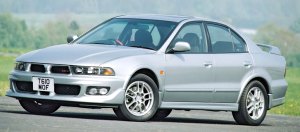
| - Nissan - 24% |
| - Mitsubishi group |
| - |
R&D center: Kyoto, Okazaki
Design studios: Tokyo
Main plants in Japan: Nagoya, Mizushima
Main overseas plant: Phathumthani (Thailand), Fuzhou (China, JV), Kaluga (Russia, JV with PSA).

FY2016/17: 926,000 units (production: 1,079,346 units)
FY2015/16: 1,048,000 units (production: 1,204,808 units)
FY2014/15: 1,090,000 units (production: 1,274,796 units)
FY2013/14: 1,047,000 units (production: 1,268,973 units)
FY2012/13: 987,000 units (production: 1,121,615 units)
FY2011/12: 1,001,000 units (production: 1,128,640 units)
FY2010/11: 1,105,000 units (production: 1,185,723 units)
FY2009/10: 960,074 units (production: 942,696 units)
FY2008/09: 1,065,406 units (production: 1,088,328 units)
FY2007/08: 1,359,497 units (production: 1,431,216 units)
FY2006/07: 1,230,033 units (production: 1,315,789 units)
FY2005/06: 1,343,825 units (production: 1,381,428 units)
FY2004/05: 1,370,000 units (production: 1,366,519 units)
FY2017/18 top 5 sales by model:
Outlander: 257,000 units
Triton: 167,000 units
RVR: 163,000 units
Pajero Sport: 87,000 units
Mirage: 81,000 units
Reference:
http://www.mitsubishi-motors.com/en/investors/finance_result/result.html
http://www.mitsubishi-motors.com/en/investors/library/fact.html
http://www.mitsubishi-motors.com/en/investors/library/anual.html
After the Second World War, it started producing low-cost 3-wheel mini trucks to meet the demand from the rebuilding Japanese society. The first mass production Mitsubishi car did not arrive until 1960, well behind local giant Toyota and Nissan. The early Mitsubishis were only small cars, but then it expanded to medium-size cars by introducing Colt, Lancer and Galant. In 1970, the automotive division formally split from the group and became Mitsubishi Motors Corporation (MMC).
 Starion (1982)
Starion (1982)Sales took off in the 1970s as a result of the economic boom in Japan. By the end of the decade, its annual sales volume had increased by 5 folds to 1 million units. Part of the success was due to its partnership with Chrysler, which took minority stakes in Mitsubishi and sold Mitsubishi products in United States under its own brands. The partnership elevated to another level in 1988, as they simply established a joint-venture factory in Illinois to produce Mitsubishi-based cars for the US market. This venture was called "Diamond-Star". In Europe, Mitsubishi partnered with Volvo to takeover the ex-DAF factory in Holland, renaming it to NedCar and started producing cars for European market.
Mitsubsihi continued to prosper in the 1980s and early 1990s. Duirng this golden period, it introduced many popular new models, such as Space Wagon, Pajero, Starion, Eclipse and Lancer Evo. It was also renowned for high-tech features, such as the 4WD and 4WS technology in Galant VR4, GTO and Sigma, powerful turbocharged engines, Invecs-II semi-automatic transmission, MIVEC variable cam timing and lift, GDI gasoline direct injection... At the end of this period, Mitsubsihi attained a high-tech image surpassing Honda and offered a wide range of cars to rival Toyota and Nissan.
 Galant VR4 Mk2 (1999)
Galant VR4 Mk2 (1999)Nevertheless, the over-expansion was hit by the burst of bubble economy. During the long-lasting recession, Mitsubishi ran into loss as it was reluctant to change its traditional life-time employment and reorganize its products. Its trouble was further deepened by the withdrawal of Chrysler and a scandal, which uncovered the company hiding the faults of its cars from the government. This eventually involved the recall of 1 million cars and cost Mitsubishi heavily in its reputation. Its domestic sales was seriously affected as a result.
Finally in 2000, Mitsubishi accepted the takeover by DaimlerChrysler. The latter bought a controlling stake of 34%. DC also brought Hyundai into the party, hoping the two Asian companies and Chrysler could share platforms and powertrains. This resulted in a new family of 4-cylinder "World Engines", and the platform sharing between Lancer and Dodge Caliber / Chrysler Sebring. However, this relationship with DC lasted for only 5 years. As Daimler found its poor subsidiaries ate into its own profit, it offloaded them one by one. Mitsubishi became independent again in 2005.
 Mitsubishi i (2005)
Mitsubishi i (2005)Volvo (now part of Ford group) added salt on its wounds by withdrawing from the NedCar venture in 2004. Mitsubishi briefly filled its capacity with Colt and Smart Forfour (built for Mercedes based on Colt), but eventually had to sell the plant in 2012. 3 years later, it closed the US plant in Illinois.
Owing to the lack of cash, Mitsubishi missed a lot of opportunity in the 2000s. It did not properly follow up its Pajero family and lost the SUV market to its Japanese rivals. It incorrectly withdrew from GDI technology when others entered this area. Nevertheless, the 2004 Colt was considered to be a rare success during this era, which helped bringing the company back to breakeven. Its finance stablized in the next decade thanks to the investment in Thailand, which became its most important and cost-effective production base. The K-car joint-venture with Nissan in Japan also brought some fruits.
In 2016, Mitsubishi was found cheating in fuel economy tests since 2002 in order to qualify for tax breaks. The scandal led to heavy fines, severe damages to its reputation and the departure of its chairman. The company had to accept the offer by Renault-Nissan to take a controlling stake of 34%. Its dependence ended again.